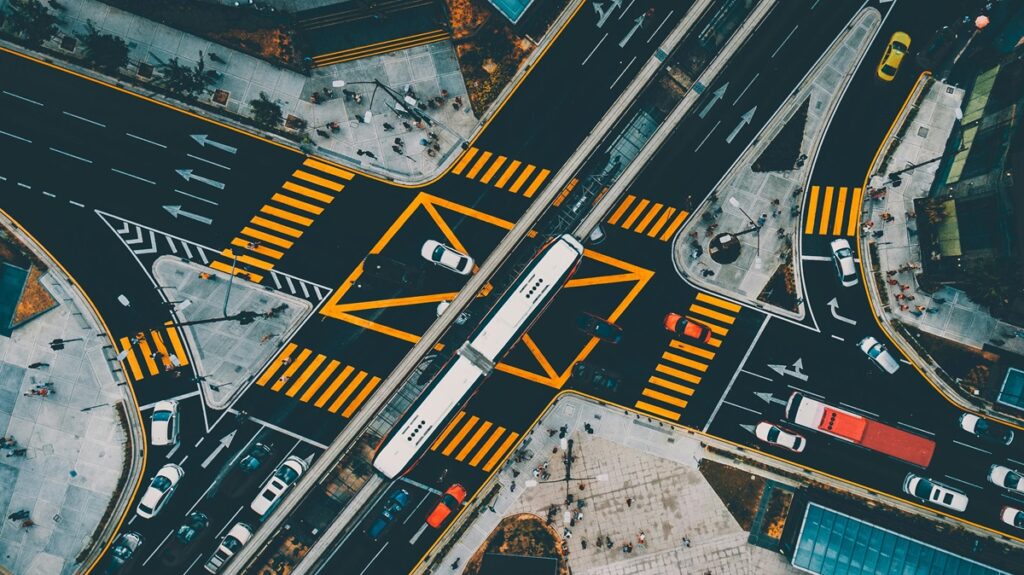As the population of cities grows, city roads become more congested and complex, raising the stakes for street safety. Creating safer streets seems like a task too daunting. Still, evidence-based solutions are transforming how we understand traffic patterns and causes of accidents. Using technology, traffic data analysis, and the implementation of intelligent urban planning strategies, cities are not only able to reduce accidents but also make cities safer for drivers, cyclists, and pedestrians. This article explores the possibility of using data to create safer streets using data analytics, real-time tracking, and other advanced measures to improve road safety.
1. Traffic Data Analysis for Wiser Infrastructure
One of the first actions in promoting road safety is to review traffic information in order to determine where the majority of accidents occur and why they occur. Urban centers are starting to use sensors and cameras to furnish information regarding traffic flow, accident locations, and vehicle activity. The data can then be examined in order to identify dangerous intersections or routes that result in congestion. For example, if a particular intersection has seen a high incidence of collisions, it may be the case that the need is for improved signage, lighting, or road design modifications. To use this data to guide urban planning choices is to send resources to where they can have the greatest impact on creating safer streets for all.
2. Real-Time Traffic Monitoring and Response Systems
The installation of real-time traffic monitoring systems is another way streets can become safer. Using advanced sensors, traffic cameras, and GPS technology, cities can now monitor traffic in real-time, which alerts the authorities to accidents, blocked cars, or risky conditions. It enables them to respond quickly to incidents, and this reduces the likelihood of secondary crashes caused by congestion or limited visibility. For instance, during a crash in Sacramento or Los Angeles, a California Highway Patrol auto accident report can be generated rapidly, giving first responders and insurance companies instant information from the moment the accident is reported. Such real-time information aids authorities and city planners in making immediate adjustments to improve safety, for instance, by adjusting traffic light cycles or rerouting cars around an obstacle.
3. Using Predictive Analytics to Avoid Accidents
Predictive analytics is crucial to identify imminent accidents before they happen. Using historical records of accidents and current traffic conditions, cities can predict where and when accidents will happen. It allows for proactive measures such as speed limit reduction in high-risk areas, placing speed bumps, or street lighting enhancement in dark areas. Predictive models also signal dangerous driver behaviors such as speeding or tailgating. Intervening in such behavior through policy changes or altering infrastructure lowers the frequency and severity of accidents, making the roads safer to travel.
4. Pedestrian and Cyclist Safety
City roads are not just for vehicles; they also have to support pedestrians and cyclists, whose safety often comes under neglect. Data-driven approaches allow cities to study pedestrian and cyclist movement patterns and determine where accidents are most likely to occur. For instance, analyzing where individuals are most frequently hit by a car while biking can help identify high-risk zones that require immediate intervention. Cities can then include features like special bike lanes, pedestrian crossings, and traffic lights in favor of non-motorized road users based on this study. Besides that, putting these elements in the optimal positions, as per data trends, ensures investment is placed where it will make the most significant impact on safety.
5. Joint Approach to Road Safety Policy Making
Developing safer streets is not in the hands of urban planners alone. There has to be a joint approach among city governments, police, city planners, and citizens to craft effective road safety policies. Data-driven solutions provide everyone with a shared perspective of the problem that concerns everyone on the streets, thereby allowing the stakeholders to meet and design particular solution strategies. By sharing accident statistics, traffic flow data, and behavior analysis, cities are able to generate policies from actual evidence, addressing particular issues and improving safety in general. This common approach ensures that no road user is left behind, creating a more inclusive and safer environment for everyone.
Conclusion
The use of data-driven solutions in urban planning is a revolution in the battle to make streets safer. With the analysis of traffic data, real-time condition monitoring, and predictive analytics, cities can proactively address safety issues before they spiral out of control. Additionally, giving precedence to the safety of pedestrians and cyclists ensures that all road users are safe. When these efforts are complemented with collaborative effort from all parties, cities can build infrastructure that minimizes accidents and creates a safer, more efficient transportation system. Data is no longer just a traffic management tool—it’s a critical component in making roads safer for everyone.

